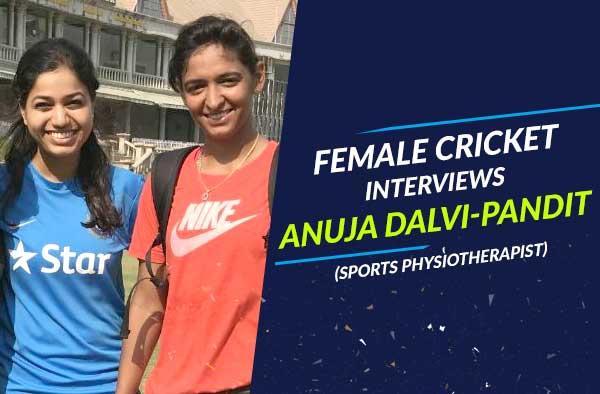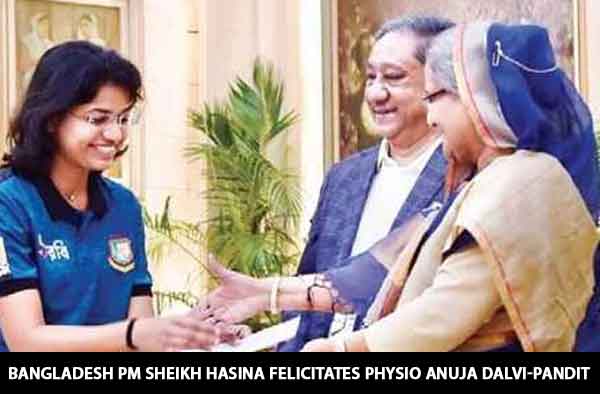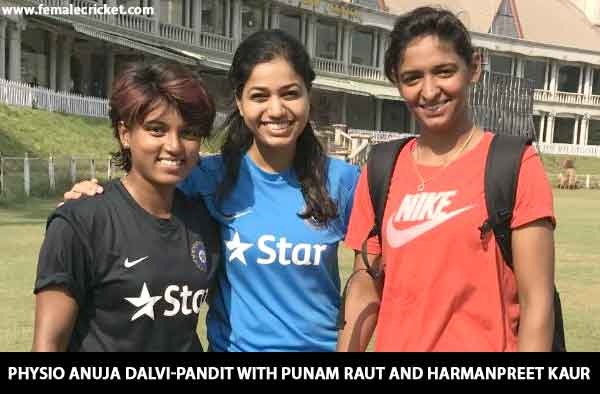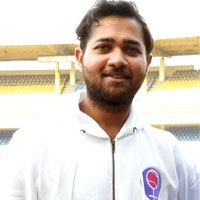Anuja Dalvi Pandit is the only current Indian female physio in Cricket who has an internationally accepted degree from the very reputed University of South Australia, following the footsteps of the other great Adelaideans like John Gloster and Andrew Leipus. John whom she calls her mentor has been a source of inspiration in her professional as well as personal life.

Niranjan Pandint who is also a very familiar name in Indian Cricket is Anuja’s husband and works with the Rajasthan Royals alongside John Gloster.
They own two centres in Mumbai in the name of LiveActive Physiotherapy & Sports Injury Clinic and is one of the top physiotherapist in mumbai. At clinics apart from cricket, Anuja sees variety of sports athletes like badminton, shooting, kabaddi, gymnastics and track and field. Anuja has also been a trusted physio to some of the top corporates and celebrities. She works with John Gloster for Go Sports foundation and has a keen interest in bringing international quality education to India in the filed of Sports Sciences.
Excerpts from the interview with Anuja Dalvi Pandit:
1. Walk us through your journey as a sports physiotherapist. What all roles does a physiotherapist play in sports?
I strongly believe in individualization of assessments and treatments as we are dealing with human beings and not machines. I rely a lot on players’ feedback and opinions as it makes my strategies more effective. Although whenever needed I do try to explain and change their unhelpful or unscientific opinions.
2. Does the treatment approach differ from player to player? How do you identify that?
It is vital to understand players routines, eg their pre-game routine or a particular type of preventive taping, any ongoing management strategies, recovery techniques etc.
Hence getting to know my players is the most crucial part of my job. It also helps me understand their psychology as in a team sports and being a traveling physio, you tend to be with the players over a longer duration.
3. Tell us about your 4 year stint with Mumbai Cricket Association? How did it happen?
I joined Mumbai cricket association in 2009, I still remember my first day at work at MCA. I was pretty confident but at the same time I was anxious about being accepted as a part of the team. I soon got noticed by the administrators and was sent from MCA to attend the Level 1 Physio program at NCA, Bangalore in 2010. Post that I have regularly worked for few years on NCA and BCCI assignments till recently when I joined Bangladesh Cricket Board.
Working under the likes of Paul Close and Ashish Kaushik at NCA has helped me turn into a better professional early in life.
Treating high performance female athletes is a specialization in itself.
4. What are the most common injuries among cricketers, particularly female cricketers? What causes them?
There are few similar issues which can be found across different sports like ACL injuries, or injuries related to hyper mobility in females, issues related to hormonal cycles and related spectrum etc.
Body image disorders, stereotype of the female body in the community and family and related diet issues was a big problem in the past but is definitely changing with modern times.
With the game getting more and more competitive and girls getting fitter and more aggressive in the style of play I can say that I have started seeing similar patterns of injuries in male and female cricket players e.g stress reactions and stress fractures in spine and lower body, posterior ankle impingement with increased pace in bowling. Increased number of games in domestic and international cricket is also an important factor.
5. We have seen male cricketers endorsing strict fitness regimes? How is the overall scene in women’s cricket?
Girls are getting more professional; they are taking more efforts in improving their skill and fitness levels. especially the 2017 World Cup has shown us all that the media and fans are eager to take Women’s cricket to the next level. Recent Asia cup win by Bangladesh has changed the whole mathematics of Women’s cricket in the subcontinent.
6. After your successful stint with Indian Cricket, you have been appointed by the Bangladesh Board as a physio for their women’s team? How has it been so far?
Working with BCB has been a phenomenal experience. We have a great team and both the coaches – Anju Jain & Devieka Palshikaar have worked wonders with these young girls. The coaches’ strategies and planning are spot on and has helped the team to perform their best since their inception. Asia cup, Ireland series and T- 20 qualifiers – we had three major wins in three months.

7. Being on assignments, this role involves a lot of travelling and hectic hours? How do you manage your personal clinic in Mumbai?
It has been a great satisfaction to see that the girls are getting the respect and financial benefits they deserve. My work is to expose them to the best possible sports medicine services. I have a great team back in Mumbai who work at the clinics. Apart from my own team I always consult wit a closely knit circuit of expert professionals who have excelled in their respective fields. This consists of some of the top orthos, radiologists, strength and conditioning experts, nutritionists and psychologists. This team work helps me achieve the best possible results in much less duration. Working with S & C professional like Anand Date has helped me set a better management plans for not only cricketers but a few non-cricket athletes.
8. What’s that one thing we all need to admit and understand about sports physiotherapy?
Physio have become inevitable part of sporting teams. I would like to request the physio community to get more global in their approach to clients and athletes. Be more accountable and adopt to modern ways of treatments and follow better documentation systems. Sports Physio services are much beyond applying ice, giving rubs and unnecessary rests to players. Research in sports is majorly lacking in our country and all the sectors need to promote it.
9. What is your typical day like?
I love working on my own fitness, as I believe in the dying practice before you preach. I workout at the gym regularly and follow a flexible but a well calculated diet.
Also Read : Other Career options for girls in cricket
10. What would be your advice to youngsters aspiring to make a career in physiotherapy?
One advice to young physio is that try to make your Musculoskeletal base much stronger before entering the field of Sports Physiotherapy. Update yourself, follow your mentors, try to always stay humble and keep learning; that’s an essence for a successful career. I strongly suggest to fellow physios to explore the educational world abroad as they are undoubtedly much more advanced when it comes to sports sciences.


On a mission to promote women’s cricket around the world! Follow our story: